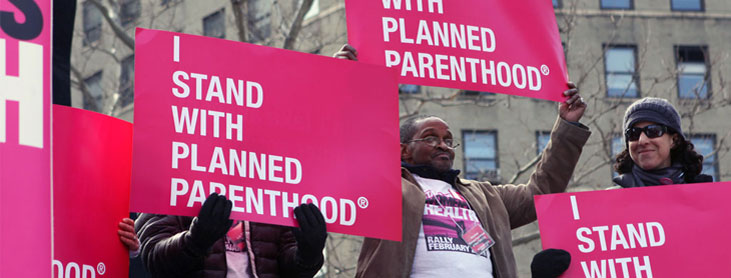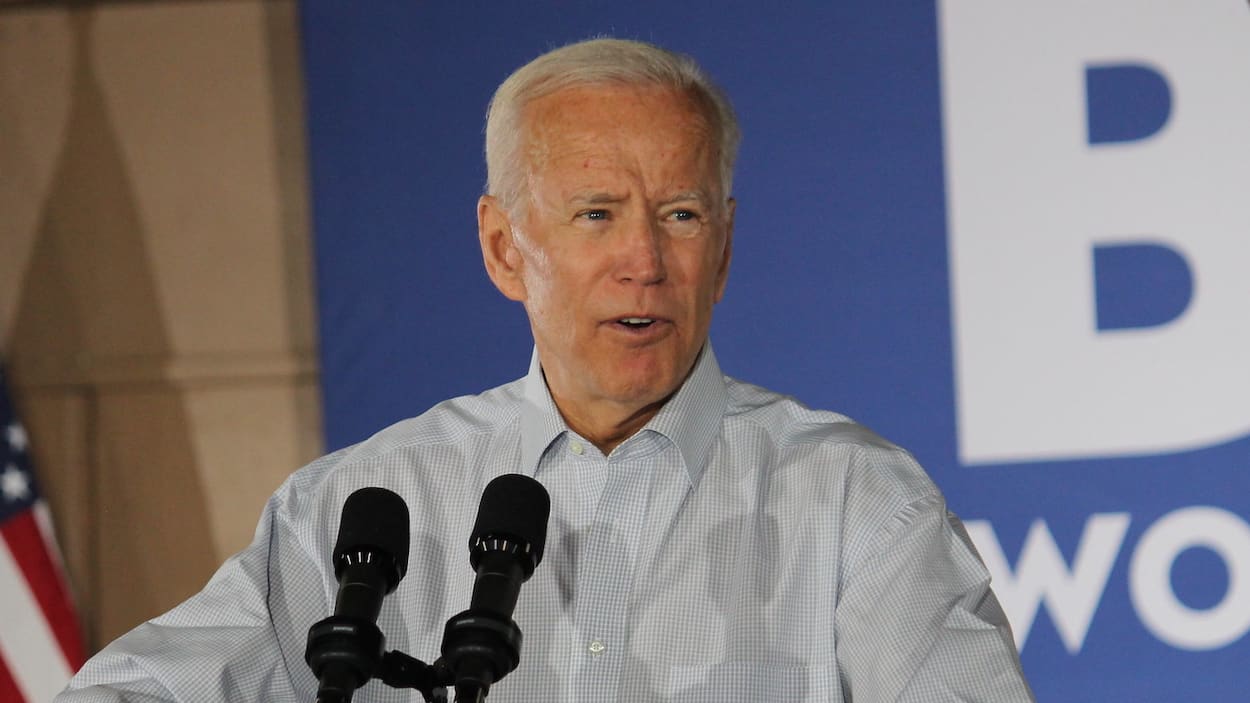
Saul Alinsky’s Rules for Radicals has been in the spotlight since Barack Obama became president. It is well known that Obama immersed himself in Alinsky’s ideas when he was a community organizer in Chicago in the mid 1980s. Alinsky’s intimidation tactics or, in today’s parlance, the art of bullying, are easily recognizable in the president’s autocratic relations with Congress, the media and the general public.
Politics of Abortion
The Alinsky strategy of intimidation and punishment applies to groups that join the long blue line of liberalism and later attempt to break away. An international women’s health organization, the Susan G. Komen Foundation, learned the hard way what it costs to deviate from the blue line’s general will. In late 2011 its officers decided to stop their funding of Planned Parenthood (PP), a prime member of the blue line. The national breast cancer research organization terminated its annual donation to Planned Parenthood because the latter group had come under increasing scrutiny from Congress over how it provides its abortion services. Such investigations directly violate Komen’s operational rules, which proscribe donations to any group under the watchful eye of Congress.
Since its founding in 1982, the Susan G. Komen Foundation has raised almost two billion dollars in support of breast cancer research, health services and advocacy. Susan Goodman Komen died three years after developing breast cancer at the tender age of 33. Her sister Nancy Brinker founded the eponymous organization to raise awareness and save women’s lives. Its Race for the Cure fundraising events have become a global phenomenon. Since it began its curious partnership with Planned Parenthood in 2005, Komen has suffered the disfavor of pro-life groups, especially the Catholic bishops, who objected to Komen’s millions of dollars of donations to Planned Parenthood. In December 2011, Lifeway Christian Resources, the publishing division of the Southern Baptist Convention, recalled the pink Bibles it had sold because some of the revenues for Komen had been funneled to PP.
This prompted Komen’s board to sever its ties with PP and dedicate itself strictly to breast cancer research instead of engaging in the damaging politics of abortion. Komen’s unilateral separation sparked an outcry from several abortion rights groups, who immediately blamed political pressure on the cuts. Part of the Alinsky method of intimidation is to politicize everything, obscuring an organization’s true motivations.
Led by its president, Texan Cecile Richards, PP instantly launched a devastating media campaign. Fellow Texan Nancy Brinker should have known PP never surrenders anything without a bitter fight. When AT&T defunded it in 1990, Planned Parenthood went on the attack, even taking out ads in the New York Times.
The Founding Mother
Planned Parenthood owes much of its success and longevity to its founding mother, Margaret Higgins Sanger. Born on September 14, 1879, Sanger was a social iconoclast whose activism was influenced by witnessing her mother, who had 18 pregnancies in 22 years of marriage, die prematurely of tuberculosis and cervical cancer at age 50. Sanger felt that in order to ensure that women had more social equality and led healthier lives they needed to have the right to determine the size of their families.
As a young woman, Sanger sought the camaraderie of similar radicals and anarchists such as John Reed, Upton Sinclair and Emma Goldman. In 1911 Sanger wrote a series of articles about sex education entitled What Every Mother Should Know and What Every Girl Should Know for the socialist magazine New York Call.
Prompted by the suffering she witnessed as a nurse in a New York City hospital due to women’s frequent pregnancies and self-induced abortions, she started a monthly newsletter, The Woman Rebel in 1914. In October 1916, Sanger opened a family planning and birth control clinic in the Brownsville section of Brooklyn, the first of its kind in the United States. Nine days after it opened, Sanger was arrested and subsequently convicted for breaking a New York state law that prohibited the distribution of contraceptives.
In the Hood
The ensuing publicity about Sanger’s conviction sparked widespread birth control activism across the country. Donations poured in from all over the country, including money from John D. Rockefeller Jr. and his family, who made population control a family value. Sanger continued her quest by founding the American Birth Control League, which evolved into the Planned Parenthood Federation of America in 1942.
After Sanger retired in 1962, Alan Guttmacher served as its president for the next 12 years. During his tenure, PP became an active force in the culture of death. Guttmacher actively lobbied the federal government to support reproductive health services legislation. This culminated with President Richard Nixon’s signing of Title X to provide governmental subsidies for low-income women to access family planning services. The law had bipartisan support from liberals who saw contraception as increasing families’ control over their lives, and conservatives who saw it as a way to keep people off welfare.
Since then PP has grown to have more than 820 clinic locations in the U.S., with an annual budget of $1 billion. PP is the largest abortion provider in the United States. While it boasts of the availability of other reproductive health services, such as contraception, cancer and HIV screening, PP provides more than 300,000 abortions per year.
A Nation of ‘Reckless Breeders’
As Planned Parenthood’s founding mother, Margaret Sanger tried diligently to join the burgeoning women’s movement. Since women still clung to faith and family, her approach met with great opposition from her feminist and suffragist contemporaries owing to her association with controversial positions about sexuality, modesty and family values. A frustrated Sanger turned to the most powerful advocacy group of her time, namely the eugenicists. In the 1920s, the United States had mandatory sterilization laws in 20 states, and eugenics courses were staples on university campuses.
Sanger eagerly adopted eugenic theory because she believed that the human race would be improved by encouraging high reproductive rates in classes deemed socially desirable … and by discouraging reproduction amongst the undesirables. Her eugenic policies included an exclusionary immigration policy, free access to birth control instructions and full family planning autonomy for the able-minded.
On the other side of the ledger, Sanger wanted compulsory segregation or sterilization for the human weeds, reckless breeders, spawning…human beings who never should have been born. Sanger feared that America’s unfit races, which included blacks, Southern and Eastern Europeans and anyone not from the WASP culture, would drag down the country. She shamelessly enlisted black ministers for her Negro Project, to deliver birth control to African Americans. To date, one third of all abortions in the United States have been perpetrated on black babies.
A ‘Race of Thoroughbreds’
Sanger decried any efforts at public works of charity for the poor. She wanted to terminate medical care for slum mothers, and she criticized the use of taxpayers’ money to aid the deaf, the blind and the dependent. She condemned foreign missionaries for reducing infant mortality in Third World countries, and declared charity for the poor and needy to be a moral evil. Sanger’s eugenics policies underscored the true purpose of her birth control crusade, which was to create a race of thoroughbreds.
While her family planning advocacy had focused primarily on contraception, Sanger’s fingerprints were all over the Roe v. Wade decision in 1973 that legalized abortion in all 50 states. Thanks to Planned Parenthood’s lobbying, the Food and Drug Administration approved the sale of the original birth control pill, which paved the way for Roe. The Pill contributed to the landmark U.S. Supreme Court case, Griswold v. Connecticut, in 1965, which created a constitutional right to birth control for American married couples. The contrived right to privacy that underpinned the abortion movement came into being through the Griswold decision.
Sanger’s personal qualms about abortion had little to do with the unborn, but focused on the life of the mother, since post-abortion infections caused a high rate of maternal deaths. It was not until after her death of congestive heart failure in September 1966 in Tucson, Arizona at age 86 that Planned Parenthood broadened its scope to include abortion rights.
The Dogs of Revenge
In the past few years there has been a frantic effort on the part of Planned Parenthood to revise its own history. Much of the effort has been directed to distance the organization and its founder, Margaret Sanger, from charges of racial bigotry. Even the slightest scandal can cost PP millions in donations. This explains why PP had to force the Komen Foundation to restore its donations in 2012.
The backlash against Komen was immediate and unrelenting. Someone had to be sacrificed to appease the dogs of revenge. Karen Handel, the chief architect of the plan to defund Planned Parenthood, was the obvious candidate. Born April 18, 1962, Handel was appointed senior vice president of public policy at Komen in 2011. As a pro-life Republican from Georgia, she was an easy target. Using another Alinsky tactic, PP demonized her as the person who had poisoned Komen against Planned Parenthood. Handel was forced to resign from Komen on February 7, 2012, less than a year after joining them.
In her 2012 book, Planned Bullyhood: The Truth Behind the Headlines, Handel deftly detailed her fierce internecine battle over PP’s defunding. She emphasized the fact that the federally funded nonprofit Planned Parenthood has millions of dollars in a war chest, set aside solely for abortion rights advocacy. Therefore the Komen donations would free even more money to advance their detestable cause.
According to Handel, Komen was not involved in politics or the type of guerrilla grassroots campaigning that Planned Parenthood unleashed on us. Her book Planned Bullyhood pulls the covers off of the myth of Planned Parenthood as a benevolent service provider. According to Handel, PP frightened Komen into submission, making her the sacrificial lamb. PP needed to restore Komen to the good graces of the liberal blue line that knows how to frighten its opposition into submission.
Handel understood that PP was no different from groups like Jesse Jackson’s Rainbow Coalition whose methods are nothing short of a shakedown. She believes that Komen was literally held hostage by Planned Parenthood and the Left, all for $700,000, which is a drop in PP’s annual budget. To keep Komen in line, Planned Parenthood, whom Handel called a bunch of schoolyard thugs, also relentlessly targeted Komen’s corporate sponsors, threatening to make an example of them. Handel knew only too well that those that were hurt the most were women and the fight against breast cancer.
A Power Game
Handel emphasized that PP was blatantly partisan, alluding to its close relationship with the Democratic Party. She reserved her harshest criticism for PP’s president Cecile Richards, who she says launched a vicious mugging of Komen, seriously hurting women with breast cancer and their families.
The sad truth is that Planned Parenthood could not have cared less about women and their families. Money and power were their game. The heart and soul of Komen’s leadership, which had steered the foundation’s ship since its inception, followed Handel to the door. Seven months after the imbroglio, Komen president Liz Thompson stepped down and even Komen’s founding mother Nancy Brinker resigned as CEO.
Despite her many years of experience in the cruel worlds of business and politics, Handel seemed woefully unprepared for the unscrupulous assaults from both PP on the outside and members of the Komen team on the inside. Handel discovered too late that the attack on Komen was a classic case of the enemy within. She believed there were leaks to Planned Parenthood from inside Komen all along. It came out that PP had several operatives in key positions on the Komen leadership team. The woman Komen hired to handle the Left was Obama consigliere Hilary Rosen.
Rosen was also a confidant of PP president Cecile Richards, as well as former White House Communications Director Anita Dunn. Komen consultant Brendan Daly had worked with Richards in Nancy Pelosi’s office. Handel also painfully learned that Republican strategist and political commentator Karl Rove had played an instrumental role in her ouster. Like the cowardly lion, Rove had counseled Komen to get rid of Handel for fear of bad publicity and loss of funding.
The ABC Hypothesis
Even before the Handel affair, there was a disturbing element in the curious partnership between PP and the Komen foundation. Dating back to the 1950s several studies have hypothesized a direct link between breast cancer and elective abortion for a first pregnancy. This abortion–breast cancer hypothesis (ABC) states that abortion increases the risk of developing breast cancer during a woman’s life.
In early pregnancy, levels of estrogen increase, leading to breast growth in preparation for lactation. The hypothesis posits that if this process is suddenly interrupted by an abortion before full maturity in the third trimester, then more relatively vulnerable immature cells could be left in a woman’s breast. Some of these could turn into deadly cancer cells. The longer a woman is pregnant before the induced abortion, the higher her risk of breast cancer. This is because high estrogen levels of the first and second trimesters cause breast growth in the lobules where most instances of breast cancer originate.
The ABC hypothesis has been the subject of intensive scientific scrutiny. The overall scientific consensus is inconclusive, probably more from the politics of abortion than from any valid disproof of the hypothesis. Scientists are vulnerable to political pressure in the awarding of lucrative government grants for research, as illustrated by the ostracism of dissenters from the questionable reigning orthodoxy on global warming or climate change. This politically correct pressure on scientific research explains why groups such as the World Health Organization, the American Cancer Society and the American College of Obstetricians and Gynecologists have all allied against the ABC hypothesis.
To counter media distortions, several pro-life advocates continue to advance an ABC link. Led by Dr. Angela Lanfranchi and Dr. Joel Brind, the Breast Cancer Protection Institute (BCP) has been doing yeoman’s work for a generation to keep the issue alive. Since 1957, there have been 67 epidemiologic studies concerning induced abortion and breast cancer. Of these, 51 showed a positive association and 30 were statistically significant.
Then why did the Komen board partner with an organization like Planned Parenthood that provides a service which can cause breast cancer in women? Staying in the blue line is the only answer that matters in the politics of abortion.








